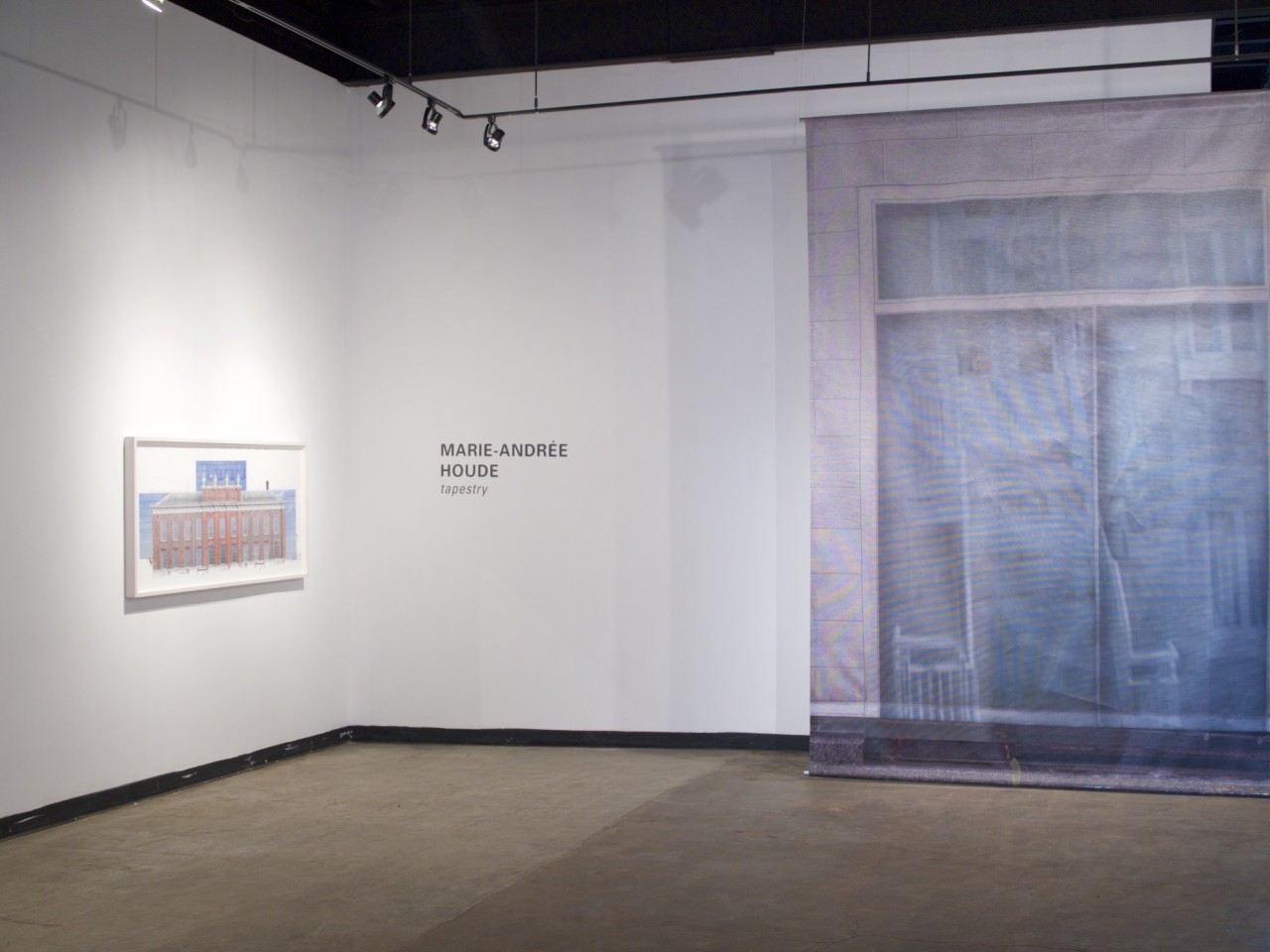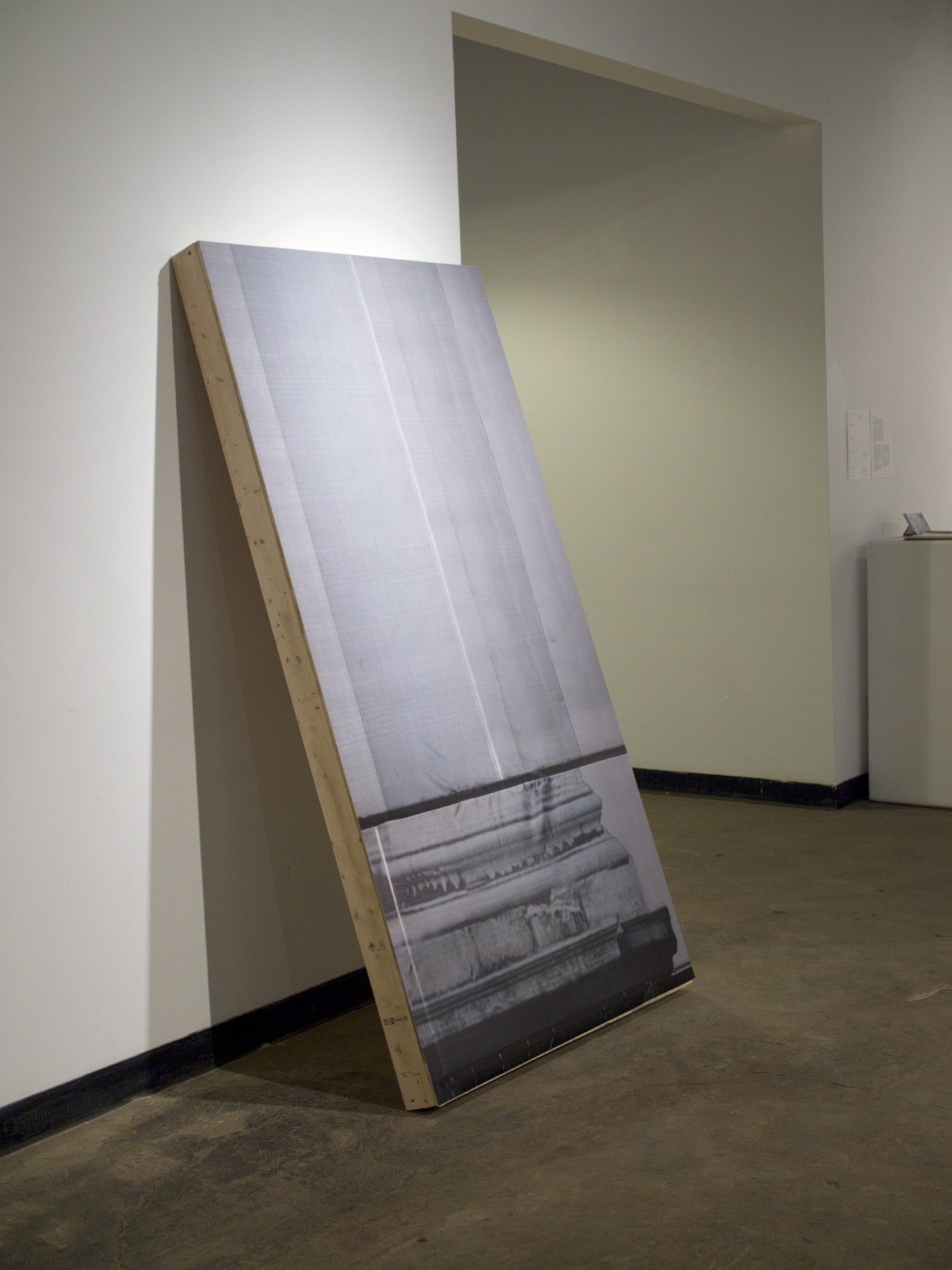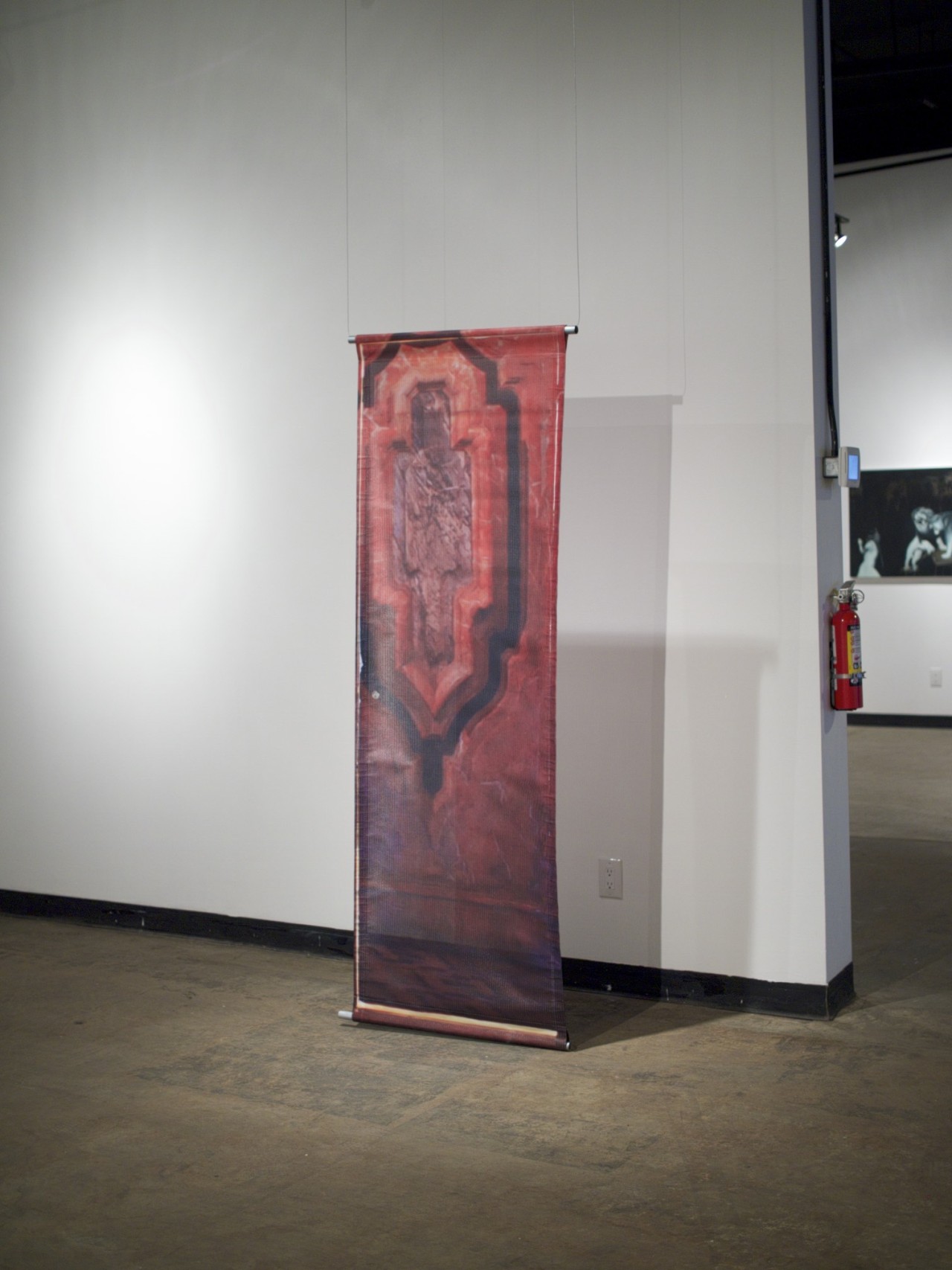Marie-Andrée Houde | Tapestry
January 29– March 5, 2016
Opening reception | Friday, January 29 at 7 pm
Artist Talk | Saturday, January 30 at 2 pm
Montreal-based Marie-Andrée Houde’s photographic installation very carefully documents the distorted, pixellated representations of buildings printed on wrap-around tarps during facade renovations. Her large-scale composite images preserve the imperfections of these strange false-fronts, and in the gallery are mixed with segments of used building wraps, blurring the space between the landscape and its image.
Manufactured Reality
Countless times I have caught myself in a role of a confused tourist standing in front of a trompe l’oeil' vinyl façade, covering the historic building I came to see. The photomontage had to suffice, until the access to the ‘real thing’ would be granted again. The vinyl left me in a disturbed state that I cannot fully describe, though; I was at the same time grateful for the indication of the content behind the metal scaffolding, and disturbed by the banalization of it. Recently, guiding a friend in Venice I was trying to describe the presence of Ponte Rialto, while it was covered for restoration. The vinyl helped. Now that it became a social norm to wrap buildings for repair, it is allowed for the spectator to question the unquestionable: the role of the praised architecture in constituting its context, and the courage to imagine something else in its place. Renovations therefore, can be seen as an opportunity to, once again, employ art on an already articulated and ‘frozen-to-change’ site. Artists and thinkers amongst us might just be the guiding stars in challenging the conventions that most of us take for granted. Marie-Andrée Houde is one of them.
The architecture itself may already exist between the two realities. One of which is the ultimate message which it tries to convey: the quality of space, shelter and stimulant to our sensory world, the poetic and the mystic realm, the ultimate reflection of life and a dream of what it could be. The other one would be the imperfection of materials and technology that are used in its practical execution, with all the charm that it brings. On top of that, trompe l’oeil' tarpaulins of historic façades might just depict another layer of reality—the performative one. One has to ask him/her-self: what is it for? What is the reason general public feels more comfortable with this painted reality and neglects the opportunity for a Christo & Jeanne-Claude like, bold artistic suggestion? Is it the perfection of the photographic documentation on the tapestry that holds the ‘restorer’ accountable for restoring the ‘patient architecture’ precisely into the one we used to see before the covering act? Is our society dependent on providing the context that will not jeopardize the tourist industry? Or is it possible to let go of it and rely on our intuition—as a surgeon relies on factors other than having human organs photo-realistically painted on the surgery cloth, while performing a human-body restoration?
There is something about the act of flattening the architecture into 2D image. And then making it be a baroquesque, bizarre, trompe l’oeil' to flirt back with the third dimension. In the age of media congested by ‘selfies’, Marie-Andrée Houde is interested in exploring the phenomenon of ‘posing’—a staged reality. If buildings would have Instagram accounts, that is probably how our cities would look: a ‘duck lipped’ flat version of the true urban content. One has to wonder whether it is even possible to resist the reign of popular imagery that dominates our visual world —what if Las Vegas effect would truly take over? The absolute trivialization of sound, texture, light, depth and smell, brought to a single dimension of a visual ‘fast food’. The process of changing the materiality of architecture is a peculiar one. It reincarnates it in another form, gives it another life—as its architectural avatar—leaving it in eternal suspense of the latent relationship between the covered content and its manufactured reality.
— Vedran Skopac
-
Vedran Skopac has worked professionally for 12 years in architectural offices in Europe and Canada (Manasc Isaac Architects in Edmonton, njiric+arhitekti in Zagreb, and his own practice MOREarchitecture in Zagreb), his work delivered award wining projects and recognition on international level.




